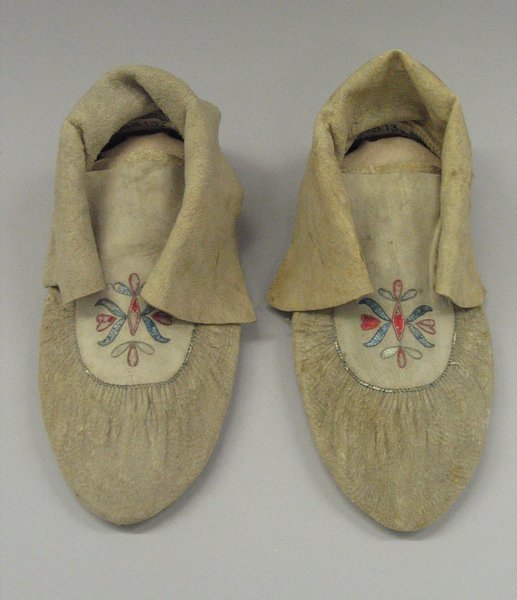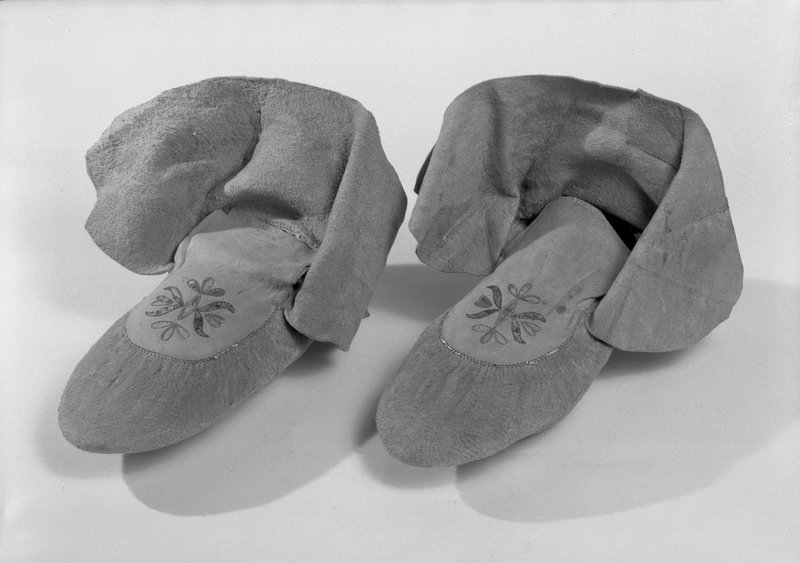Pair of Moccasins Item Number: 50.67.22a-b from the Brooklyn Museum


Description
Made of heavily smoked skin sewn with sinew, the vamps of these moccasins are decorated with a delicate, quillwork design. A central, vertically oriented, diamond shape in red is surrounded by four diagonal leaf-like elements in blue. The tri-lobed petals at top are red at center, blue on each side. The lower petals are red at center, white on each side. The seam is also outlined with blue and white bird quills. The mocassins are constructed without the usual characteristic center seam running from the toe to a vamp. A heel seam, center to the cuff and bottom, ends in two short tabs.There is no evidence that these mocassins were ever worn. See Jarvis supplimental file in Arts of Americas' office.
Label
THE JARVIS COLLECTION
The articles in this case and the adjacent clothing case [see 50.67.6] are some of the earliest and finest Eastern Plains pieces in existence. They were collected by Dr. Nathan Sturges Jarvis, a military surgeon stationed at Fort Snelling, Minnesota, between 1833 and 1836. Most items were made by the Eastern and Middle Dakota (Sioux) or by the peoples of the Red River region, including the Red River Métis, Anishinabe, Plains Cree, and Salteaux. Some of the objects were purchased by Jarvis, and others may have been given to him in exchange for his medical services.
By the early nineteenth century, the growing numbers of white settlers and military personnel—following decades of fur trading—had depleted much of the game on which the Dakota and Red River peoples depended. Indigenous ingenuity in combining trade materials such as cloth, metal, and glass beads with traditional hides, pipestone, and porcupine and bird quills is evident in these objects.
Credit Line
Henry L. Batterman Fund and Frank Sherman Benson Fund
Item History
- Made between 1800 and 1825
What
- Name
- Pair of Moccasins
- Identification Number
- 50.67.22a-b
- Type of Item
- moccasin and pair
- Material
- smoked hide, porcupine quill, bird quill and sinew
- Overall
- length 10.5 in
Who
- Culture
- Red River Metis
Where
- Holding Institution
- Brooklyn Museum
When
- Creation Date
- between 1800 and 1825
Other
- Classification
- Clothing